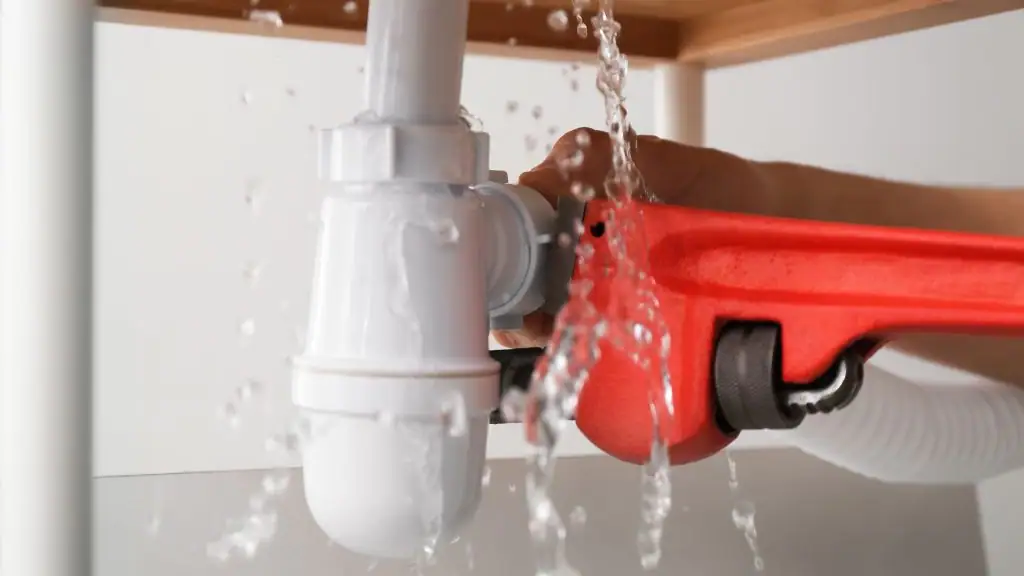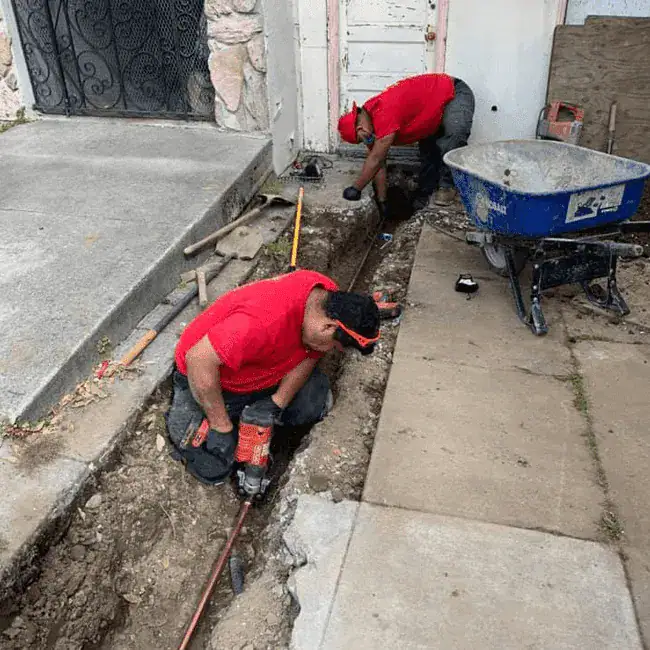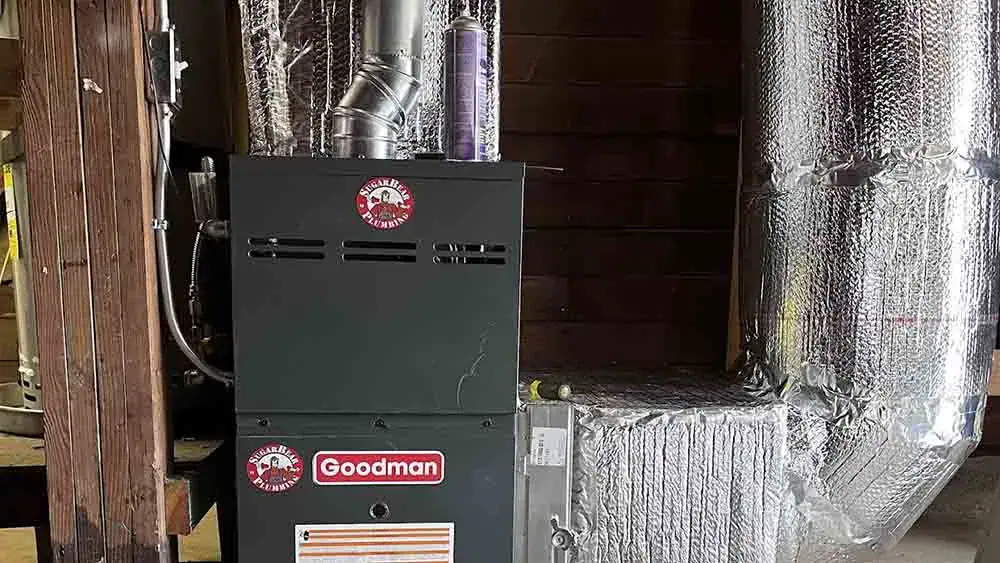Summary:
Understanding When and Why Pipes Freeze in San Francisco
Most San Francisco homeowners don’t realize their pipes are at risk until it’s too late. Pipes typically start freezing when outdoor temperatures drop below 32°F, but the real danger begins when temperatures stay below 20°F for extended periods.
In the Bay Area, the biggest risk isn’t necessarily the outdoor temperature—it’s the unheated spaces in your home. Your garage, attic, basement, and crawl spaces can get much colder than the rest of your house, putting any pipes in those areas at serious risk.
The freezing process itself is what causes the damage. When water freezes, it expands by about 9%, creating tremendous pressure inside your pipes. This pressure can crack even the strongest pipes, leading to leaks or complete pipe failure once the ice thaws.
Which Areas of Your San Francisco Home Are Most Vulnerable
Not all pipes in your home face the same level of risk. Understanding which areas are most vulnerable helps you focus your prevention efforts where they matter most.
Unheated interior spaces top the list of problem areas. Your garage is particularly vulnerable if you have water lines running through it, especially for washing machines or utility sinks. Many San Francisco homes have plumbing in their garages that homeowners completely forget about until there’s a problem.
Attics and crawl spaces are equally risky, particularly in older San Francisco homes where insulation may be minimal. These areas often have little to no heating and can get surprisingly cold during winter nights. If you have pipes running through these spaces, they’re extremely vulnerable to freezing temperatures.
Exterior walls present another challenge common in San Francisco’s Victorian and Edwardian homes. Pipes running along outside walls, especially on the north side of your home, are exposed to cold air infiltration through small gaps and cracks. Kitchen and bathroom sinks are often installed on exterior walls, making their supply lines particularly vulnerable.
Basements, while typically more stable in temperature, can still pose risks if they’re unheated or have poor insulation. The combination of concrete floors and walls can create surprisingly cold conditions that put your plumbing system at risk.
The Real Cost of Frozen Pipe Damage in San Francisco, CA
Not all pipes in your home face the same level of risk. Understanding which areas are most vulnerable helps you focus your prevention efforts where they matter most.
Unheated interior spaces top the list of problem areas. Your garage is particularly vulnerable if you have water lines running through it, especially for washing machines or utility sinks. Many San Francisco homes have plumbing in their garages that homeowners completely forget about until there’s a problem.
Attics and crawl spaces are equally risky, particularly in older San Francisco homes where insulation may be minimal. These areas often have little to no heating and can get surprisingly cold during winter nights. If you have pipes running through these spaces, they’re extremely vulnerable to freezing temperatures.
Exterior walls present another challenge common in San Francisco’s Victorian and Edwardian homes. Pipes running along outside walls, especially on the north side of your home, are exposed to cold air infiltration through small gaps and cracks. Kitchen and bathroom sinks are often installed on exterior walls, making their supply lines particularly vulnerable.
Basements, while typically more stable in temperature, can still pose risks if they’re unheated or have poor insulation. The combination of concrete floors and walls can create surprisingly cold conditions that put your plumbing system at risk.
Want live answers?
Connect with a Sugar Bear Home Services expert for fast, friendly support.
Proven Prevention Strategies That Work in San Francisco
Preventing frozen pipes is much easier and cheaper than dealing with the aftermath of a burst pipe. The key is taking action before the cold weather hits and maintaining vigilance during cold snaps.
The most effective prevention strategies focus on keeping pipes warm and water moving. These approaches work together to create multiple layers of protection for your plumbing system, especially important in San Francisco where sudden temperature drops can catch homeowners off guard.
Temperature control is your first line of defense. Even when you’re away from home, keep your thermostat set to at least 55°F. This might cost a bit more in heating bills, but it’s nothing compared to the cost of emergency plumbing services and water damage from burst pipes.
Insulation and Physical Protection Methods
Proper insulation is one of the most effective ways to protect your pipes from freezing. The goal is to keep pipes at a temperature above freezing, even when the surrounding air gets cold.
Pipe insulation comes in several forms, each suited to different situations. Foam pipe sleeves are the most common and easiest to install. These split-foam tubes slip over your pipes and provide basic insulation for most applications. For pipes in extremely cold areas, consider wrapping them with heat tape before adding the foam insulation.
Heat tape, also called heat cable, is an electrical heating element that wraps around pipes to provide active warming. Modern heat tape includes thermostats that automatically turn the heating on and off based on temperature, making it both effective and energy-efficient. Make sure any heat tape you use is UL-listed and appropriate for your specific type of pipes.
Don’t overlook simple solutions like newspaper or towels in emergency situations. While not permanent solutions, even a quarter-inch of newspaper can provide significant protection during unexpected cold snaps. This can buy you time to implement more permanent solutions or call a licensed plumbing contractor for help.
Sealing air leaks around your home helps maintain warmer temperatures in vulnerable areas. Check for gaps around windows, doors, and where pipes enter your home. Caulk or weatherstrip these areas to prevent cold air infiltration. Pay special attention to areas where pipes run along exterior walls, common in many San Francisco homes.
In your garage, keep the doors closed during cold weather, especially if you have water supply lines running through the space. The thermal mass of your garage can help maintain more stable temperatures when it’s sealed from outside air.
Water Movement and Temperature Management
Moving water is much harder to freeze than standing water, making water flow one of your most powerful prevention tools. This strategy works because flowing water doesn’t have time to reach freezing temperature as it moves through the pipes.
During cold snaps, let faucets drip slowly, especially those served by pipes in vulnerable areas. You don’t need a strong flow—just a steady drip is enough to keep water moving. Focus on faucets connected to pipes running through unheated spaces or along exterior walls, particularly common in San Francisco’s older residential buildings.
Open cabinet doors under sinks, particularly those on exterior walls. This allows warm air from your heated living space to circulate around the pipes. Remove any cleaning supplies or chemicals from these areas first, especially if you have children or pets.
If you’re planning to be away from home during cold weather, don’t turn your heat off completely. Set your thermostat to at least 55°F to maintain a minimum temperature throughout your home. Have a trusted neighbor check on your house periodically to ensure the heat is working properly.
For extended absences during winter, consider having your plumbing system winterized by a professional plumber. This involves draining water from your pipes and adding antifreeze to traps and fixtures. While this requires professional plumbing services to do properly, it provides complete protection against freezing.
Water heater maintenance plays a supporting role in freeze prevention. A properly functioning water heater helps maintain warmer water throughout your plumbing system. If your water heater isn’t working efficiently, the water in your pipes may be closer to freezing temperature to begin with. Regular water heater service can prevent this issue.
When to Call Sugar Bear Home Services for Emergency Plumbing
Despite your best prevention efforts, you might still encounter frozen pipes. Quick action can often prevent a frozen pipe from becoming a burst pipe, saving you thousands in water damage.
If you turn on a faucet and only get a trickle or no water at all, you likely have a frozen pipe. Don’t panic—frozen pipes can often be thawed safely if you act quickly and carefully. The key is applying gentle heat while keeping the faucet open to allow melted ice to flow out.
Never use open flames, blow torches, or other high-heat sources to thaw pipes. These can damage your pipes or even start a fire. Instead, use a hair dryer, space heater, or hot towels to gradually warm the affected area. If you can’t locate the frozen section, can’t access it safely, or your efforts aren’t working, it’s time to call us for emergency plumbing services.
We provide 24/7 emergency plumbing services throughout San Francisco and South San Francisco, CA. With over 20 years of experience as a licensed plumbing contractor, we have the tools and expertise to safely thaw frozen pipes and assess whether any damage has occurred. Our team can respond quickly to minimize damage to your home and get your plumbing system back to normal operation.




